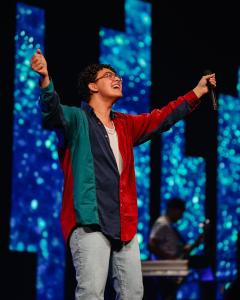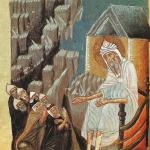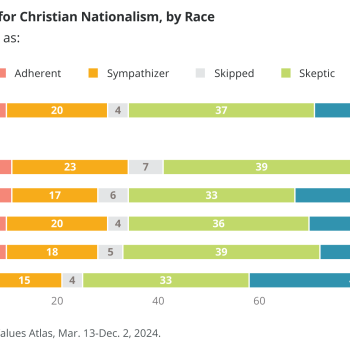Hi! I am a cultural sociologist on a tour of Texas Megachurches. Check out my first post here!
It’s the dog days of summer in Texas and I’m wilted. I hope things are better where you are.
Over Memorial Day weekend, I revisited Westover Hills Assembly of God, one of the original five megachurches I intended to visit on my tour. For readers primarily interested in Christian Nationalism, I’ll offer that Westover Hills unabashedly observed the Memorial Day holiday. I realize now I have failed to mentioned that San Antonio is known as Military City, USA, for being home to one of the largest concentrations of military bases in the United States and to the Department of Defense’s largest medical center at Joint Base San Antonio Fort Sam Houston. Westover’s observance of the day can be seen from marker 27:09 here. The video shows Pastor Jonathan Mussett describing felled veterans as having made “the ultimate sacrifice by giving everything,” and calls for the congregations’ gratitude in response. This rhetoric instantiates an orthopathy: we are summoned to feel grateful for veterans’ sacrifices. Mussett then describes veterans as “purchasing freedom for us.” Then Mussett says that the reason “we are able to worship” is because “they have paid the price.” Mussett is here referring to the idea that Christians wouldn’t be able to worship freely– they wouldn’t have religious freedom that they do–without military deaths. This seems like a Christian Nationalist idea, but I am unaware of its being part of any previous taxonomy on the subject. This treatment, then, spiritually authorizes the military, issuing a kind of moral check that can be cashed when the military takes action against an enemy state or supports an ally. It also valorizes “freedom,” in this case, the freedom to worship, as a spiritual (not solely political) good. (I suspect this is a difference between evangelicals and the general population, who likely feel their rights to be important but might not see them as a spiritual good.) Mussett’s treatment ties megachurch worship to the ongoing work of the military, which fights to protect our American freedom to worship. He invokes John 15:13, which states that no man has greater love than the one who “lays down his life for his friends,” to swath this morning’s Christian Nationalism in a soft Christology. Military people, we are told, exemplify this aspect of Jesus’ character. Finally, Mussett prays and the moment is over, having lasted roughly three minutes. Everything has to be briskly done at megachurches.

This visit, the music was especially good. The song service featured Holy Forever by Bethel music as the climax to its worship set. From about 24:30-26:30– but especially between 25:08-25:30—a young worship leader named Jonathan Rosa carried the musical service to its emotional peak. The video shows how physical this work is; note how both gesturing and facial expressions need to come together to successfully lead worship for a charismatic megachurch. More importantly, note for just how long Jonathan is singing at full voice.
For this post, I am thinking mostly about how young Rosa, who appears to be in his early to mid twenties, is. He’s one of a number of young worship leaders I’ve seen in action in my tour of megachurches to this point. On this tour of megachurches, I am looking for the degree of racial and gender diversity on our megachurch platforms (premised on the idea that a lack of racial diversity in leadership is a marker of white christian nationalism). I’ve been pleasantly surprised by the diverse group of young men and women I’ve seen holding forth over crowds of thousands on my tour.

There is an equally impressive young woman worship leader at Community Bible Church. Actually, she’s extremely impressive–I am sorry that I cannot find available videos of her leading CBC’s 16,000+ congregation in worship. She is pictured here, to the right. CBC seems to only make the preaching parts of their worship available online. She’s a wonderful vocalist and, as this picture shows, completely comfortable engaging and directing CBC’s very large crowds.

Max Lucado’s Oak Hills Church also features young, ethnic minority leaders in worship. JD Mason, the Creative Pastor of Oak Hills, is pictured to the left. He regularly assumes leadership of Oak Hills’ 15000+ crowds during worship which is, again, mostly comprised of the worship songs that come out of the four big charismatic worship publishing houses.
There’s been a lot of coverage lately of the emergence of four big charismatic worship publishing houses: Hillsong, Bethel, Elevation, and Passion– but I am not aware of any coverage of the coincidental rise in racial minority platformed leadership. You’ll hear the beginnings of an argument that the rise of Hillsong et al is a whitening of the church (all four have white leadership in their highest echelons, I do think), but at the local level these worship currents are creating a cadre of young, talented, people of color in prominent, very visible places of church leadership on Sunday mornings. Their leadership lends the music not only talent and vitality, but actual youthfulness.
For all the talk there was about evangelicalism dying a few years back (2020), there is a rising class of diverse, young worship leaders in many megachurches that suggests otherwise.
Attracting young people is all important in any church’s bid to maintain relevance and viability. Leah Payne’s God Gave Rock and Roll to You (2024) situates the growth of the Contemporary Christian Music industry within a maternal agenda to safeguard children from malign cultural influences– by giving teens Christian music instead. Evangelicalism proper is organized similarly: children and adolescents are nurtured within a family-centered church space that encourages young adherents to keep themselves safe from cultural evils. But with the rise of worship music (which Payne depicts as picking up where the CCM industry has left off) we have, not music for young people to passively listen to in the car, we have music they can literally lead from huge platforms. Where Payne illustrates that music executives looking to sell to “Becky” (whom they typified as their core white, suburban mom customer) could not avoid centering white tastes and leaders in CCM, worship music houses may be less vulnerable to the racialized economic forces that CCM could never avoid; their music appeals to evangelicalism’s diverse youth set.
This bodes well for churches participating in charismatic worship trends. I’ve visited mainline Protestant churches lately and I have not seen as many young people in their pews and none positioned in their platforms– maybe one makes an announcement here and there or a youth pastor presides over communion. I think this bodes poorly for mainline Protestantism, about which Ryan Burge says: “[S]ecular life is going to get bigger and stronger, and the very religious right is going to grow stronger. And in the middle, I think we are going to see the closure of several mainline denominations over the next 10 or 20 years. The ELCA, PC(USA), the Episcopal Church — they are all doing very poorly in terms of membership, especially as the average mainline Protestant is now 60 years old. In 20 years, 30% or 40% of mainline Protestant churches may die off. And how are they going to be replaced? The answer is they’re not going to be replaced, in almost any every instance.” I am struck by how the medium of charismatic worship, if now a billion dollar industry, is proving a conduit for participation for young people in megachurches. Their very visible participation in leading worship helps megachurches present young, racially- and gender-diverse face(s) to the world which, in the aggregate, looks like thriving and suggests the vitality of the movement for decades to come.
For now, it does seem like the strength of charismatic worship houses lends strength to megachurches, and vice versa.













